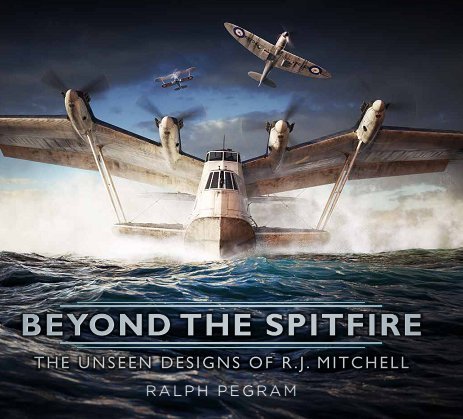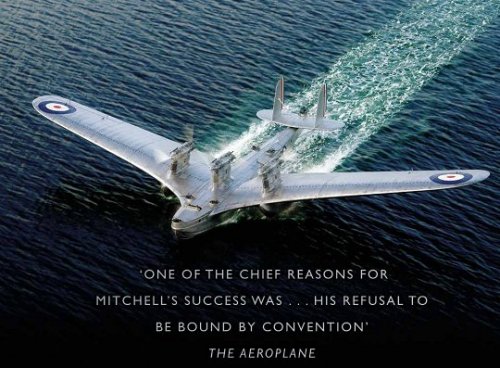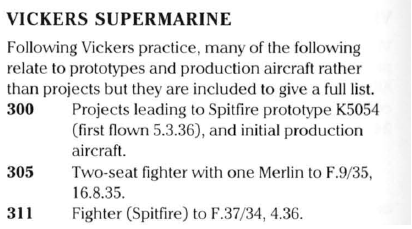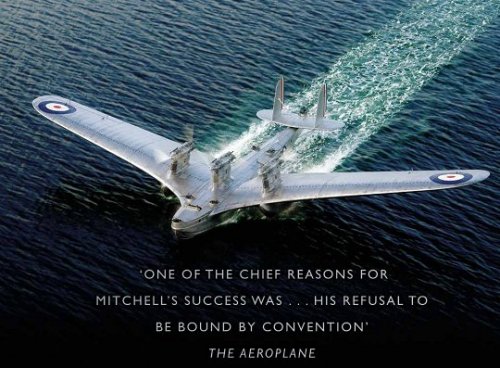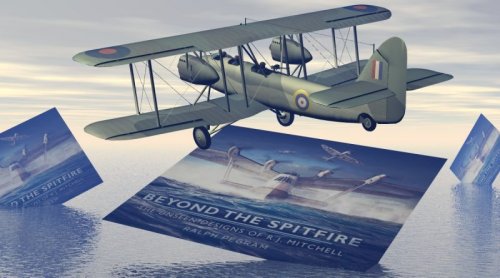- Joined
- 19 October 2012
- Messages
- 1,982
- Reaction score
- 1,936
Now at the printers and available 2nd May 2016
http://www.thehistorypress.co.uk/publication/Beyond-the-Spitfire/9780750965156/
Chapter 1. Supermarine – origin and the early years
Noel Pemberton Billing
Hubert Scott-Paine
Supermarine Aviation Works Ltd
Reginald Mitchell arrives
The Supermarine Baby
Chapter 2. 1919 - Supermarine meets the challenge of peace
Securing the business
Staff changes
The first Channels
Racing
Speculative designs
Chapter 3. Mitchell’s first flying boats
Olympia - new variations on old themes
Selling the Channel
Commercial Amphibian competition
Military designs
Racing again
Chapter 4. Commercial aircraft and airlines
Diversification and expansion
British Marine Air Navigation
Chapter 5. Production at last
The struggle to survive
Seagulls
Chapter 6. More racing and Scott-Paine departs
Defending the Schneider Trophy
James Bird takes over
Chapter 7. The move to big ‘boats
Multi-engine flying boats
The Southampton
Nanok
Chapter 8. Expanding the design team, light aircraft and more amphibians
The Design Department
Mitchell’s first land aeroplane
The next generation of amphibians
Chapter 9. Racing: a new direction and a dead end
Mitchell’s first monoplane
Chapter 10. Competition and the introduction of fabrication in metal
The rise of the flying boats
The metallurgy department
Chapter 11. A move away from marine aircraft
Mitchell’s first true fighter
Chapter 12. Schneider Trophy racers; a triumph and a distraction
Success in Venice
Chapter 13. 1927 – New ideas
Supermarine relaunched
Dornier
The big ‘boat designs
Mitchell joins the board
Chapter 14. Vickers
Takeover
Reorganisation
New recruits
Chapter 15. Hard Times
Schneider success and the air speed record
Southampton X and the Air Yacht
Small civil flying boats
Chapter 16. The saga of the six-engined flying boats
Dornier again
Concepts for very large flying boats
The Giant awakes
The Giant’s demise
Chapter 17. The Type 178 projects
Random ideas, embryo projects, none of the above
Chapter 18. Transition
Seeking overseas customers
Torpedo Bomber
Civil flying boats
Australian amphibian
Canadian Monoplane
The final Schneider success and another air speed record
Chapter 19. Replacing the Southampton
Scapa
Stranraer
Chapter 20. Small Amphibians & Miscellaneous projects
Small Amphibians
Seagull V
Sea Otter
Transports
Coastal patrol
Un-numbered projects
Chapter 21. Fighters
Late 1920’s biplane fighters
F.7/30 and the quest for innovation
Type 300
Designing the Spitfire
On elliptical wings
The Spitfire in context
Two-seat fighters
Cannon fighters
Chapter 22. Competition and the four-engined flying boats
Coastal Patrol
Imperial Airways
Sikorsky
Mitchell’s views on air transport
Flying Boats for Imperial Airways
Short’s monoplane flying boats
Trans-Atlantic flying boats
Chapter 23. More twin-engined flying boats
Replacing the Stranraer
High-speed monoplane flying boats
Chapter 24. Bombers
Bombers in the 1920s
Single engine bombers for the 1930s
B.1/35 Twin Engined Heavy Bomber
B.12/36 Four Engine Heavy Bomber
Chapter 25. Supermarine after Mitchell
Turmoil and uncertainty in the Works
Pre-war projects
Chapter 26. RJ, the man and the rise of a legend
The legend
R.J.Mitchell; the man
Genius
Appendix 1. Orphan designs
Appendix 2. The Spitfire’s skewed elliptical wing and notes on NACA aerofoils
Appendix 3. The Design Department
Appendix 4. Supermarine Project list and index
http://www.thehistorypress.co.uk/publication/Beyond-the-Spitfire/9780750965156/
Chapter 1. Supermarine – origin and the early years
Noel Pemberton Billing
Hubert Scott-Paine
Supermarine Aviation Works Ltd
Reginald Mitchell arrives
The Supermarine Baby
Chapter 2. 1919 - Supermarine meets the challenge of peace
Securing the business
Staff changes
The first Channels
Racing
Speculative designs
Chapter 3. Mitchell’s first flying boats
Olympia - new variations on old themes
Selling the Channel
Commercial Amphibian competition
Military designs
Racing again
Chapter 4. Commercial aircraft and airlines
Diversification and expansion
British Marine Air Navigation
Chapter 5. Production at last
The struggle to survive
Seagulls
Chapter 6. More racing and Scott-Paine departs
Defending the Schneider Trophy
James Bird takes over
Chapter 7. The move to big ‘boats
Multi-engine flying boats
The Southampton
Nanok
Chapter 8. Expanding the design team, light aircraft and more amphibians
The Design Department
Mitchell’s first land aeroplane
The next generation of amphibians
Chapter 9. Racing: a new direction and a dead end
Mitchell’s first monoplane
Chapter 10. Competition and the introduction of fabrication in metal
The rise of the flying boats
The metallurgy department
Chapter 11. A move away from marine aircraft
Mitchell’s first true fighter
Chapter 12. Schneider Trophy racers; a triumph and a distraction
Success in Venice
Chapter 13. 1927 – New ideas
Supermarine relaunched
Dornier
The big ‘boat designs
Mitchell joins the board
Chapter 14. Vickers
Takeover
Reorganisation
New recruits
Chapter 15. Hard Times
Schneider success and the air speed record
Southampton X and the Air Yacht
Small civil flying boats
Chapter 16. The saga of the six-engined flying boats
Dornier again
Concepts for very large flying boats
The Giant awakes
The Giant’s demise
Chapter 17. The Type 178 projects
Random ideas, embryo projects, none of the above
Chapter 18. Transition
Seeking overseas customers
Torpedo Bomber
Civil flying boats
Australian amphibian
Canadian Monoplane
The final Schneider success and another air speed record
Chapter 19. Replacing the Southampton
Scapa
Stranraer
Chapter 20. Small Amphibians & Miscellaneous projects
Small Amphibians
Seagull V
Sea Otter
Transports
Coastal patrol
Un-numbered projects
Chapter 21. Fighters
Late 1920’s biplane fighters
F.7/30 and the quest for innovation
Type 300
Designing the Spitfire
On elliptical wings
The Spitfire in context
Two-seat fighters
Cannon fighters
Chapter 22. Competition and the four-engined flying boats
Coastal Patrol
Imperial Airways
Sikorsky
Mitchell’s views on air transport
Flying Boats for Imperial Airways
Short’s monoplane flying boats
Trans-Atlantic flying boats
Chapter 23. More twin-engined flying boats
Replacing the Stranraer
High-speed monoplane flying boats
Chapter 24. Bombers
Bombers in the 1920s
Single engine bombers for the 1930s
B.1/35 Twin Engined Heavy Bomber
B.12/36 Four Engine Heavy Bomber
Chapter 25. Supermarine after Mitchell
Turmoil and uncertainty in the Works
Pre-war projects
Chapter 26. RJ, the man and the rise of a legend
The legend
R.J.Mitchell; the man
Genius
Appendix 1. Orphan designs
Appendix 2. The Spitfire’s skewed elliptical wing and notes on NACA aerofoils
Appendix 3. The Design Department
Appendix 4. Supermarine Project list and index

